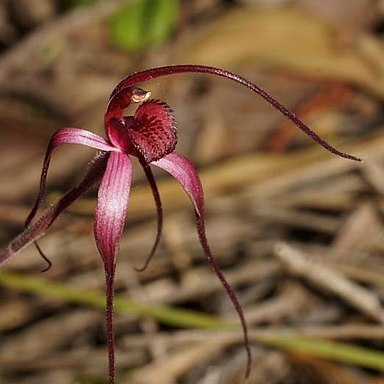Leaf lanceolate, 80–120 × 5–10 mm, hairy. Flower stem 60–400 mm long, hairy, 1-or 2-flowered. Flowers 35–50 mm across, smell like hot metal, cream to pale yellow variably stained with pink to red or wholly red; sepals and petals with relatively short, thin, dark red to blackish, glandular tips (no clubs), tips covered with single-celled, stalked glands. Dorsal sepal erect and incurved, 30–50 × 3–5 mm. Lateral sepals obliquely decurved, tips shallowly drooping, 45–60 × 5–7 mm, divergent. Petals similarly arranged, 30–45 × 3–4 mm. Labellum 14–16 × 9–11 mm, blood red, sometimes base pale; margins with numerous short, thick, dark red teeth to 1.5 mm long reducing in size, but extending nearly to apex; apex strongly recurved. Basal calli 4–6, c. 1.3 mm long, linear. Lamina calli golf-stick-like, to 1 mm long, dark red, in 4 or 6 rows extending onto base of midlobe. Column 9–11 × 5–6 mm, red, broadly winged; basal glands c. 1 mm long, ovoid, yellow.

